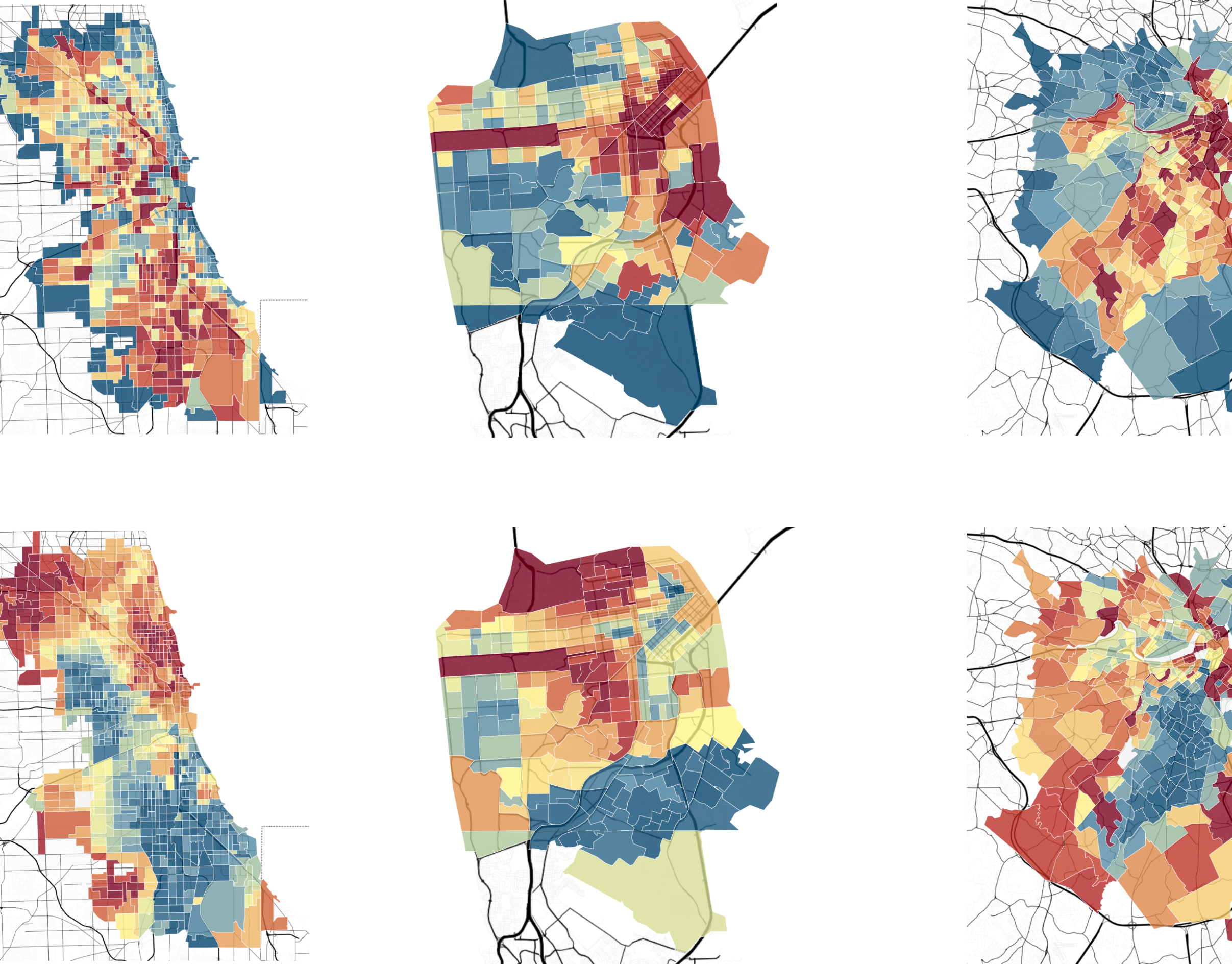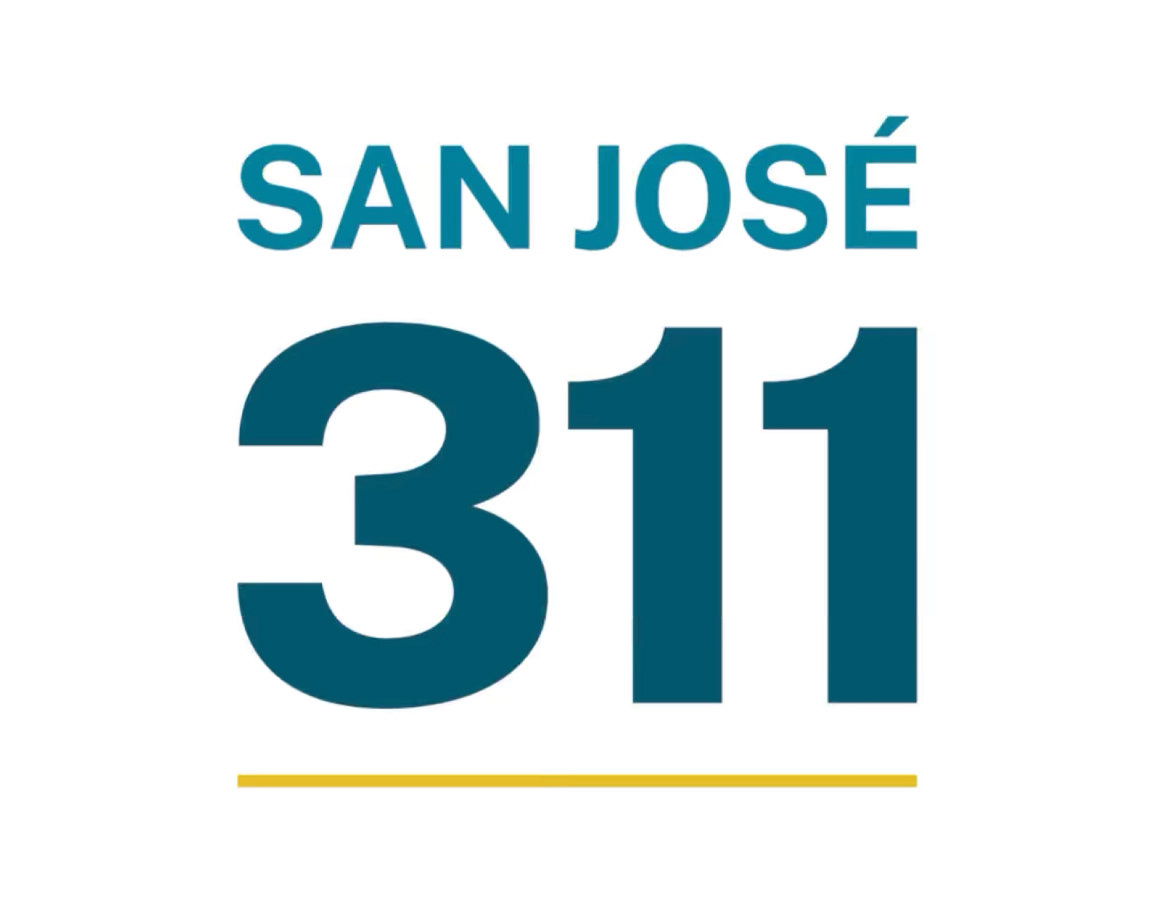Increasing Disadvantaged Families’ Awareness of Financial Aid & the True Cost of ColleGE
Written By: Michael Spencer
Executive Summary
The long-term benefits of a college degree are undeniable. Many parents see college as a path to success, but too many discourage their students from pursuing postsecondary options due to misconceptions about college costs and the availability of financial aid. Disproportionately affected are disadvantaged families with low-income, first-generation, minority, immigrant, and/or non-English speaking backgrounds, who in some cases have overestimated the true cost of college by 228%.
By better informing disadvantaged parents and families of the true costs of college and their eligibility for substantial financial aid, states can negate the effects of these misconceptions and encourage families to pursue a postsecondary education, unbiased by prior beliefs about the costs. Following an identify, inform, and assist framework based off of the I Know I Can College: Blueprint program in Columbus, Ohio, we recommend that states:
1: Strengthen middle school outreach efforts to disadvantaged families.
2: Make informational programming transparent, comprehensible, and accessible to all who seek it.
3: Provide FAFSA application assistance to those who need it at no cost to families.
Introduction
The cost of going to college is rising. Between 2006 and 2016, the average price of undergraduate tuition, fees, room, and board at public and private institutions increased by 34% and 26%, respectively (“Tuition Costs of Colleges and Universities,” 2018). To make matters worse, the average debt of graduating college seniors who borrowed had increased to almost $30,000 in 2016 (“Student Debt and The Class of 2017,” 2018). Although some may not be deterred by this, students who come from traditionally disadvantaged - first-generation, low-income, minority, immigrant, and/or non-English speaking - households are, and the purported financial burden can be the driving factor in deciding whether or not to pursue a postsecondary education.
Figure 1
Today, knowledge of financial aid and how to make the most of it are essential to college access, yet many are underinformed. Only 47% of people claimed to know “a lot” or a “good amount” regarding how to apply for and receive various forms of financial aid such as scholarships, loans, and grants (Ikenberry, Stanley O., & Terry W. Hartle, 2000). The remaining 53% - the majority of which come from disadvantaged backgrounds - lack adequate knowledge about the potential benefits of financial aid and how it can make paying for college possible. This gap highlights the need to provide disadvantaged families with the proper information needed so that they can make better informed decisions about attending and paying for a postsecondary education.
Though students learn some college information from their counselors and peers, their parents play one of the most important roles in helping them develop their college-going habitus. The attitudes, experiences, and information - or lack thereof - transferred from parent to student can be a determining factor in whether or not a student develops the drive and motivation to want to go to college. It is thus important that parents have the appropriate knowledge and information to give proper and accurate guidance to their children.
In California for example, 96% of surveyed Latinx parents said they had hopes their child would attend a college or university (Zarate Ph.D., Maria Estela, & Harry P. Pachon Ph.D., 2006). Despite this, only 30% had taken any steps towards obtaining basic financial aid or cost information about potential colleges their student could attend (Horn, Laura J., Xianglei Chen, & Chris Chapman, 2003).
This information gap leads families to drastically overestimate the true cost of college, with the most erroneous being those from disadvantaged backgrounds. These families make cost-estimation errors two to three times greater than their more privileged counterparts, with some overestimating the true cost of college by as much as 228% (Grodsky et. al). Estimation errors such as these can leave parents unsure and worried about the true cost of college, an attitude that makes them less willing to encourage their children to pursue postsecondary options - thus negatively impacting a student’s college-going attitude.
By better informing families about the potential financial aid their students could receive, and better educating them on how and where to apply, states can encourage otherwise hesitant families to send their students to colleges.
Benefits to Better Informing Families
Better informing and supporting parents on how to finance college will positively influence college-going attitudes and college enrollment. Parents with more complete and accurate information will leave their students better informed, encouraged, and capable of pursuing postsecondary options (Mcdonough, Patricia M., & Shannon Calderone, 2006; Perna, Laura W. 2004). Parents with such information will also be more knowledgeable in making recommendations and providing unbiased advice for their students during discussions about the college search. Most importantly, the families and parents of first-generation students who may have previously struggled to support their students in their college-search process will now be better equipped with the knowledge to do so. This extra support could help students to develop positive college-going attitudes that will ultimately land them in postsecondary institutions.
For low-income students in particular, having confidence in their parents’ support boosts their willingness to apply to four-year institutions. Students with confidence in their parents’ ability to provide information about college and whose parents were confident in their ability to finance college were 66% more willing to apply to four-year institutions (Ikenberry, Stanley O., & Terry W. Hartle, 2000). Stated another way, students whose parents are more informed about college and ways to pay for it are more willing to consider and apply for four-year institutions as opposed to no institution at all. By providing this information early, more students can be encouraged to not only consider a postsecondary institution, but to actually apply for and enroll in one.
By enrolling in college, students set themselves up for a future of social and economic success, which has individual and societal implications. College graduates with bachelor’s degrees and those with some college earn 67% and 13% more than their counterparts with only high school degrees, respectively.
Figure 2
Further, those with bachelor’s degrees also have an easier time finding and retaining jobs. The unemployment rate for those with only high school degrees is twice that of those with bachelor’s degrees (Ma, Jennifer, Matea Pender, & Meredith Welch, 2016). Encouraging college enrollment among students who otherwise might not have attended can result in higher earning power for such students, as well as healthier habits and a more civic mindset. At a macro level, this results in an economy with more spending power, as well as healthier and more engaged citizens. To actually see this change, policy and programs must be enacted in order to better inform parents and families of financial aid opportunities. One program - I Know I Can’s Blueprint: College in Columbus, Ohio - is a great example of success.
How it Can Work
The I Know I Can (IKIC) college access program in Columbus, Ohio was founded in 1988 with the goal of inspiring, enabling, and supporting Columbus City students (Glaser, Elizabeth, & Carrie Warick, 2016). While the program is on a relatively small scale compared to what would be needed at the state level, it serves as a good model from which a larger program could be built. IKIC’s Blueprint: College program addresses the need for better information among disadvantaged families by both delivering the necessary college and financial aid knowledge and by informing families early on.
Key to the program’s success are its comprehensive content, as well as its ability to include parents in the discussion of college and financial aid.
Whereas many other programs provide workshops and information only to students, the IKIC program hosts workshops for middle school students and their families. The workshops are held over a three-part series and include topics ranging from academic preparation to financial aid. As part of the programming, Blueprint: College educates families on work-study, scholarships, grants, and even loans. Recognizing the need for application assistance, IKIC even holds free workshops to help families apply for the FAFSA, one of the nation’s biggest applications for financial aid ( “About Us - I Know I Can,” n.d).
Early results have shown that program participants matriculate to college 23% more often than non-program participants. Participants also outpace their peers 3:1 in taking college preparatory exams by the end of their junior year. Importantly though, the program noticeably increases parental knowledge about college preparation while decreasing parental anxiety about how to pay for it. Such results can positively influence parental roles and attitudes when communicating with their children about postsecondary possibilities (Glaser, Elizabeth, & Carrie Warick, 2016).
Recommendations
Given what’s known about the benefits of better informing families of college access information - and in particular about financial aid opportunities - states should consider implementing programs capable of identifying, informing, and assisting families in their efforts to understand and apply for financial aid. In doing so, states should consider the following recommendations in order to be most effective.
Strengthen middle school outreach efforts to disadvantaged families:
Though early informational programming is effective, it is only effective for those who are actually aware of it and participate in it. In order to have the widest effect possible, states should notify every family possible about the costs of college and potential financial aid options. For disadvantaged families in particular, states should attempt to reach out by the time a student is in eighth grade, as early planning is essential for the development of a successful college-going plan.
In order to maximize reach, states should partner with government programs and entities, such as SNAP, Medicaid, and the IRS to best identify those most in need. These three channels in particular would allow for the most comprehensive and exhaustive outreach efforts from which states could identify and send information to target families (Baum, Sandy, Sarah Minton, & Lorraine Blatt, 2015).
Make informational programming transparent, comprehensible, and accessible to all who seek it:
Once in-need, disadvantaged families are identified, states must ensure that the informational programming offered to them is easily comprehensible and accessible. In order to be effective, language and technological barriers must be overcome. The former in particular represents one of the biggest reasons non-English speaking families lack adequate knowledge about the college financial aid process (Chan, Deland, Deborah Frankle Cochrane, Shanon Gallegos, & Edie Irons, 2008; Zarate Ph.D., Maria Estela, & Harry P. Pachon Ph.D., 2006; Tornatzky, Louis G., Richard Cutler, and Jongho Lee, 2000). Effective programming should have personnel available that are fluent in the most commonly spoken languages of the district, and should also provide informational packets, brochures, and websites in various translations. To address technological barriers, steps should be taken to make informational programming available offline, as many disadvantaged families do not have reliable access to a computer or the internet. In situations where it is necessary, free computer access should be granted to students and families who need it either at the school or a local library.
Effective programming should also assume no prior knowledge about seemingly basic concepts. Many disadvantaged families, particularly those who are first-generation Americans or first-generation at college, may not understand financial aid concepts such as grants, loans, scholarships, and work-study. Any programming that looks to be effective must include some briefing on what these concepts are and how they impact families’ potential financial aid (Zarate Ph.D., Maria Estela, & Harry P. Pachon Ph.D., 2006).
Provide FAFSA application assistance to those who need it at no cost to families:
Once families have been informed about the financial aid process and how to navigate it, free programming should be in place to assist families in need with filing the FAFSA. Whether it is done via group workshops or 1:1 coaching, it is a critical step in the identify, inform, and assist framework laid out above. Students and families who are offered FAFSA filing assistance in addition to information about college financial aid are 40% more likely to apply for aid compared to those only provided with information but not filing assistance (Bettinger, Eric P., Bridget Terry Long, Philip Oreopoulos, & Lisa Sanbonmatsu, 2009). By providing this assistance when needed, states can decrease the number of families dissuaded from applying due to difficulties in understanding and navigating financial aid forms, an issue that predominantly affects first-generation, undocumented, and immigrant households.
These recommendations are critical steps that can be taken to better inform families about financial aid opportunities and the true cost of college. When used jointly to guide programming, states can leverage the role of the family and parents in making college financial aid decisions to have a positive impact on the number of students successfully applying for and receiving aid, and ultimately matriculating in colleges.
“I want every individual who has the potential and qualifications to succeed in higher education to be given the opportunity to participate, whatever their family background. No one should be held back from realising their potential by fears that they will not be able to afford to go to university or that they will graduate with unmanageable levels of debt.”
- Gordon Brown, Ex-Prime Minister of Britain
References
Baum, Sandy, Sarah Minton, and Lorraine Blatt. 2015. “Delivering Early Information about College Financial Aid Exploring the Options for Middle School Students.” Washington, D.C. http://www.urban.org/sites/default/files/publication/64661/2000306-delivering-early-information-about-college-financial-aid.pdf.
Bettinger, Eric P., Bridget Terry Long, Philip Oreopoulos, and Lisa Sanbonmatsu. 2009. “The Role Of Simplification And Information In College Decisions: Results From The H&R Block FAFSA Experiment.” http://www.nber.org/papers/w15361.
Chan, Deland, Deborah Frankle Cochrane, Shanon Gallegos, and Edie Irons. 2008. “Paving the Way: How Financial Aid Awareness Affects College Access and Success.” Berkeley. https://ticas.org/sites/default/files/pub_files/Paving_the_Way.pdf.
Frenette, Marc, and Jennifer Robson. 2011. “Financial Literacy of Low-Income Students: Literature Review and Environment Scan.” Toronto. http://www.heqco.ca/SiteCollectionDocuments/FinLitENG.pdf.
Glaser, Elizabeth, and Carrie Warick. 2016. “What Does the Research Say about Early Awareness Strategies for College Access and Success ?” http://www.collegeaccess.org/images/documents/EAPolicyStrategies_NCAN2016.pdf.
Grodsky, Eric, Melanie T. Jones, Karl Alexander, Stefanie Deluca, and Stephen Morgan. 2007. “Real and Imagined Barriers to College Entry: Perceptions of Cost.” Social Science Research 36: 745–66. https://doi.org/10.1016/j.ssresearch.2006.05.001.
Horn, Laura J., Xianglei Chen, and Chris Chapman. 2003. “Getting Ready to Pay for College What Students and Their Parents Know About the Cost of College Tuition and What They Are Doing to Find Out Statistical Analysis Report.” http://www.edpubs.org.
Ikenberry, Stanley O., and Terry W. Hartle. 2000. “Taking Stock: How Americans Judge Quality, Affordability, and Leadership at U.S. Colleges and Universities.” American Council on Education, 58. https://eric.ed.gov/?id=ED451778.
King, Jacqueline E. 1998. “The Decision To Go to College: Attitudes and Experiences Associated with College Attendance Among Low-Income Students.” Washington, DC. https://files.eric.ed.gov/fulltext/ED398775.pdf.
Ma, Jennifer, Matea Pender, and Meredith Welch. 2016. “The Benefits of Higher Education for Individuals and Society About the Authors.” https://trends.collegeboard.org/sites/default/files/education-pays-2016-full-report.pdf.
Mcdonough, Patricia M., and Shannon Calderone. 2006. “The Meaning of Money Perceptual Differences Between College Counselors and Low-Income Families About College Costs and Financial Aid.” American Behavioral Scientist 49 (12): 1703–18. https://doi.org/10.1177/0002764206289140.
Perna, Laura W. 2006. “Understanding the Relationship Between Information About College Prices and Financial Aid and Students’ College-Related Behaviors.” American Behavioral Scientist 49 (12): 1620–35. https://doi.org/10.1177/0002764206289144.
Perna, Laura W. 2004. “Impact Of Student Aid Program Design, Operations, And Marketing On The Formation Of Family College-Going Plans And Resulting College-Going Behaviors Of Potential Students.” http://www.teri.org/files/pdf/research-studies/ReseachReport_Perna.pdf.
Tornatzky, Louis G., Richard Cutler, and Jongho Lee. 2000. “College Knowledge: What Latino Parents Need To Know and Why They Don’t Know It.” Claremont. http://www.trpi.org/PDF/College_Knowledge.pdf.
Venegas, Kristan M. 2006. “Internet Inequalities Financial Aid, the Internet, and Low-Income Students.” American Behavioral Scientist 49 (12): 1652–69. https://doi.org/10.1177/0002764206289147.
Zarate Ph.D., Maria Estela, and Harry P Pachon Ph.D. 2006. “Perceptions of College Financial Aid Among California Latino Youth.” Los Angeles. http://www.csac.ca.gov/doc.asp?ID=20.
“About Us - I Know I Can.” n.d. Accessed December 8, 2018. https://iknowican.org/about/about-us/.
“Tuition Costs of Colleges and Universities.” 2018. National Center for Education Statistics. https://nces.ed.gov/fastfacts/display.asp?id=76.
“Student Debt and The Class of 2017.” 2018. Washington, D.C. https://ticas.org/sites/default/files/pub_files/classof2017.pdf.


